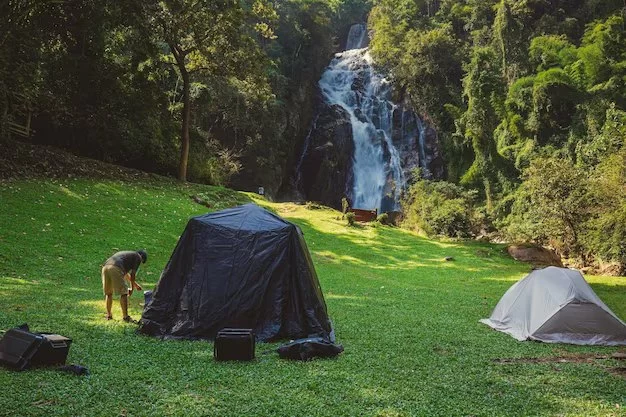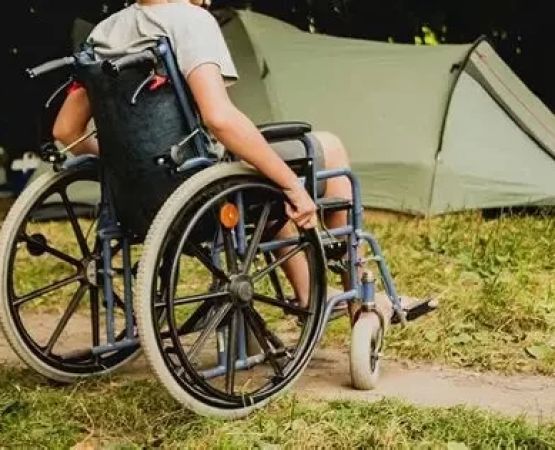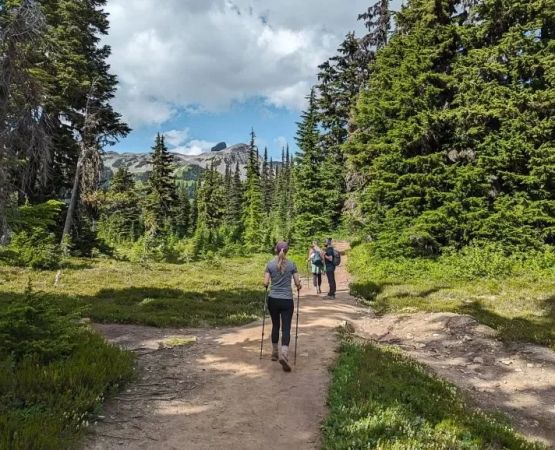Finding the Magic of Camping Near Waterfalls and Rapids
There’s something truly mesmerizing about camping near the sound of rushing water — the cool mist of a nearby waterfall, the rhythmic power of rapids echoing through the trees. It’s no wonder that camping near waterfalls and rapids has become a dream for outdoor enthusiasts across the U.S. However, beauty comes with challenges: the terrain can be slippery, the weather unpredictable, and the water currents powerful. With the right planning and knowledge, your waterfall camping experience can be both safe and unforgettable. To make your adventure even smoother, you can explore expert advice and camping services at Pine Cliff Resort, where outdoor comfort meets natural wonder.
1. Choosing the Perfect Waterfall or Rapids Camping Spot
1.1 Understanding Terrain and Accessibility
Before setting up your tent near a waterfall or rapids, research the area’s accessibility and terrain type. Some waterfalls are located deep within forests or require moderate hiking through rocky paths. If you’re a beginner, start with established sites that have safe trails and clearly marked camping areas. Always check for terrain stability — avoid setting up camp too close to steep embankments or flood-prone zones.
1.2 Research Local Regulations and Safety Notices
Many national parks and nature reserves have rules about where camping is permitted near water sources. These rules protect both the ecosystem and your safety. Always review park guidelines, weather alerts, and local water conditions before your trip. At Pine Cliff Resort, experienced staff can help campers identify safe zones and provide up-to-date environmental reports for rivers and waterfalls in the region.
1.3 Consider the Season and Water Levels
Waterfalls and rapids change dramatically throughout the year. During spring melt or after heavy rainfall, water levels rise, creating breathtaking views — but also potential hazards. Late summer or early fall often provides the best balance of beauty and safety, with moderate flows and comfortable camping conditions.
2. Setting Up Camp Safely Near Moving Water
2.1 Maintain a Safe Distance from the Water
While it’s tempting to pitch your tent right beside a roaring waterfall, safety experts recommend maintaining at least 200 feet of distance. Sudden rainstorms can cause rapid water level increases, flooding low-lying campsites. Choose a slightly elevated, flat surface that provides a good view without putting you in harm’s way.
2.2 Watch for Ground Conditions
Damp soil near rivers can appear firm but may collapse under pressure. Test the ground before setting up your tent and avoid moss-covered or slick areas. Bring waterproof gear and ground tarps to prevent moisture from seeping through your tent floor overnight.
2.3 Pay Attention to Wind and Spray
Waterfalls can generate strong air currents and mist that affect your campsite’s comfort. Position your tent so that the entrance faces away from the waterfall to prevent condensation buildup. If possible, camp behind natural barriers like trees or rocks to block excess spray and wind chill.
3. Enjoying the Experience: Activities Around Waterfalls and Rapids
3.1 Photography and Nature Observation
Waterfalls provide a stunning backdrop for photography, especially during sunrise or sunset when the mist catches the golden light. Bring a waterproof camera or phone case to protect your gear. Many campers also enjoy birdwatching — waterfall environments often attract unique species that thrive in humid, lush surroundings.
3.2 Swimming and Wading — With Caution
Not all waterfalls or rapids are safe for swimming. Before entering the water, check for submerged rocks and current strength. Even shallow rapids can have powerful undertows. Stick to designated swimming zones, and never dive into unfamiliar waters. At Pine Cliff Resort, local guides can recommend safe natural pools perfect for cooling off without risk.
3.3 Campfire Relaxation and Mindful Moments
Few experiences compare to sitting by a campfire as the sound of rushing water fills the night. Use this time to unwind, practice mindfulness, or share stories. The combination of natural sound and gentle firelight creates a therapeutic atmosphere that many campers describe as “soul-healing.”
4. Real-Life Experience: The Rapids of Oregon’s McKenzie River
One traveler, Brian from Oregon, recalls his unforgettable trip camping near the McKenzie River’s cascading rapids. “We could hear the water roaring all night,” he said. “At first, it was intimidating, but after a while, it became the most peaceful sound I’d ever heard.” Following safety advice from local experts, Brian and his friends set up camp a safe distance from the water and woke up to a misty sunrise over the falls — a memory that stayed with him long after the trip ended. Experiences like these are exactly what make Pine Cliff Resort’s nature-centered getaways so special — connecting people to nature without compromising safety or comfort.
5. Packing Essentials for Waterfall Camping
5.1 Waterproof and Weather-Resistant Gear
Moisture control is the golden rule of waterfall camping. Bring waterproof bags for clothing, electronics, and food. A sturdy rainfly and sealed tent seams are essential. Choose quick-dry fabrics for comfort and bring extra towels to handle misty mornings.
5.2 Non-Slip Footwear and Trekking Poles
Slippery rocks and uneven trails are part of the adventure, but they can also cause injuries. Non-slip hiking boots and trekking poles provide better grip and balance, especially when navigating wet paths or descending to riverbanks.
5.3 Emergency and Safety Equipment
Always pack a basic first-aid kit, whistle, waterproof flashlight, and rope. Cell service can be unreliable near waterfalls, so consider a satellite communicator for emergencies. Inform someone of your trip plan and expected return time before heading out.
6. Preserving Nature While You Camp
6.1 Leave No Trace Principles
Waterfall ecosystems are delicate. Avoid using soap or detergents near water sources, and carry all trash out with you. Fires should be contained in designated pits, and you should avoid picking plants or disturbing wildlife.
6.2 Respect Noise and Wildlife
Let nature’s sounds take center stage. Excessive noise can disturb both animals and fellow campers. Maintain a respectful distance from local wildlife — they’re part of the beauty you came to enjoy.
6.3 Support Eco-Friendly Resorts
When planning your trip, consider staying at eco-conscious accommodations like Pine Cliff Resort, which emphasizes sustainability and local conservation. Responsible tourism helps preserve these natural treasures for future generations.
7. The Reward of Waterfall and Rapids Camping
Camping near waterfalls and rapids offers an unmatched sensory experience — the sight of cascading water, the scent of damp earth, and the gentle rhythm that soothes both body and mind. Whether you’re an experienced adventurer or a weekend explorer, the key lies in preparation, respect for nature, and a willingness to embrace the unexpected.
With expert tips from seasoned campers and trusted locations like Pine Cliff Resort, you can turn your waterfall camping dream into a safe and exhilarating reality. Every trip near these majestic natural features reminds us why we seek the wild — not just to see it, but to feel it.







